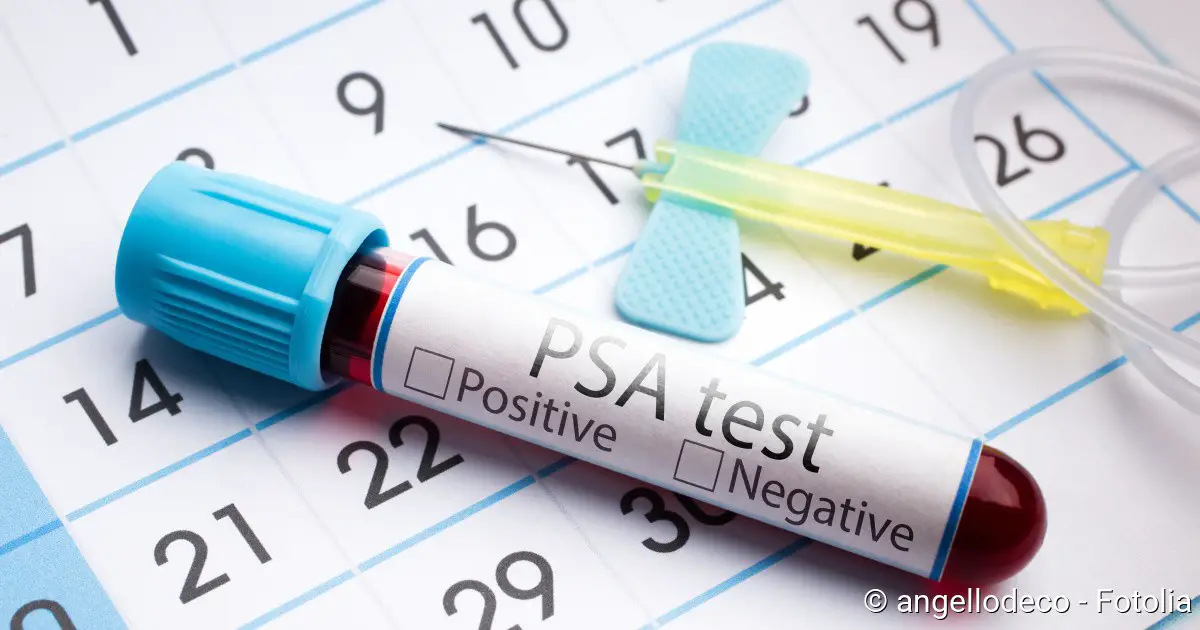PSA levels: What It Says About The Prostate
PSA levels
The PSA levels were discovered in the US just over 40 years ago as a measure of the activity of prostate tissue (3). The Prostate-Specific Antigen (PSA) is a protein produced exclusively by prostate cells (6). It can be measured in the blood (PSA test) (2). The PSA level is determined to assess the course of prostate cancer (1). Whether it is also suitable for the early detection of cancer is controversially discussed (5). In the US, the statutory health insurance companies do not currently pay for the PSA test for early detection (PSA screening), but there are different cases (4). In the European Union, these PSA levels tests are covered and free in general (9). Find out all you need to know about the PSA levels here.
ICD code for this condition is C61

What are the PSA levels?
PSA is an abbreviation for “prostate-specific antigen” (7). It is a protein that is only produced by the prostate. It makes the seminal fluid more fluid.
The PSA test measures how much PSA circulates in the blood. Experts have established an age-dependent PSA standard value, but this is only a guide. It is impossible to give a generally valid limit value for PSA levels in healthy men. In general, however, the following applies: In the case of prostate cancer (prostate carcinoma), PSA levels are often significantly higher than the reference values mentioned here and continue to increase with tumor growth.
| Age | PSA standard range |
| up to 40 years | < 1,4 µg/l |
| up to 50 years | < 2,0 µg/l |
| up to 60 years | < 3,1 µg/l |
| up to 70 years | < 4,1 µg/l |
| for over 70 years | < 4,4 µg/l |
Caution: An elevated PSA level does not necessarily mean that the patient concerned has prostate cancer. Conversely, even with a normal PSA level, prostate cancer cannot be ruled out with certainty.
An elevated PSA level can also be caused, for example, by a benign enlargement of the prostate (BPH, benign prostatic hyperplasia), inflammation of the urinary tract or prostate, or a prostate infarction. In addition, PSA levels usually increase with age.
On the other hand, even a low (normal) PSA level is not a reliable proof that prostate cancer is not present. Measuring the PSA level alone is therefore not suitable for diagnosing or ruling out prostate cancer beyond doubt.
PSA Level For Early Detection Of Prostate Cancer
It has not yet been clarified how important the PSA levels actually is in the early detection of prostate cancer. Since the introduction of PSA measurement, prostate cancer has been detected much more frequently and also earlier. However, only a few of the men who are diagnosed with prostate cancer would actually suffer or even die from it. This is because in many cases the prostate carcinoma grows very slowly and would therefore only lead to symptoms after years or even decades (clinically silent/latent prostate carcinoma).
However, the diagnosis of prostate cancer is very frightening for most of those affected and is therefore emotionally very stressful. In addition, many men undergo treatment after the diagnosis, which is often associated with side effects such as urinary incontinence or impotence. If one considers that only a minority of men would actually have experienced symptoms of prostate cancer, it becomes clear that many men are unnecessarily confronted with the stressful diagnosis of prostate cancer, and treatment would often be unnecessary.
Conclusion: So far, it is very controversial among experts whether the PSA levels are more harmful or beneficial for the early detection of prostate cancer.
PSA Levels Measurement And Follow-up Examinations
However, it is undisputed that measuring the PSA level after prostate cancer treatment is useful. For example, during surgery, the entire prostate gland is removed along with the surrounding tissue. Within a few weeks, the PSA level in the blood then falls into an undetectable range (below 0.2 nanograms per milliliter of blood).
If PSA in the blood is suddenly measured again in a follow-up examination, this can indicate a return of cancer (recurrence): Cancer cells could spread again in the area of the surgical site or elsewhere in the body. A PSA test can, therefore, be used to detect and treat a relapse at an early stage.
Early detection of prostate cancer: Conclusion
An important part of the early detection of prostate cancer is a palpation examination via the anus: With one finger, the doctor palpates the prostate via the rectum for noticeable changes. This digital-rectal examination is paid for once a year by the statutory health insurance companies for all men over 45 years of age. However, it alone can only detect prostate cancer in an advanced stage.
In order to detect the malignant tumor earlier, men are therefore often offered further examinations (at their own expense): an ultrasound examination of the rectum (rectal ultrasound) as well as the PSA test. As mentioned above, the significance of PSA levels in the early detection of prostate cancer is controversial. There is no recommendation that is valid for all men.
Health agencies advise all men to consult a doctor about the various examinations. In individual cases, men and doctors should then decide together whether the PSA level should also be determined as part of the early detection of prostate cancer.
This text complies with the requirements of medical literature, medical guidelines and current studies and has been reviewed by medical experts.
ICD codes:
ICD codes are internationally valid codes for medical diagnoses. They can be found, for example, in doctors’ letters or on certificates of incapacity to work.




